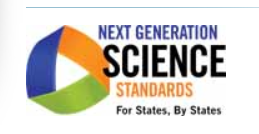 Even though it’s been almost two weeks since the Geological Society of America meeting in Denver, I feel like I’m just starting to catch my breath. At GSA I officially passed the gavel to Aida Award as the incoming president of National Association of Geoscience Teachers (NAGT). The NAGT works to foster improvement in the teaching of the Earth sciences at all levels of formal and informal instruction, to emphasize the cultural significance of the Earth sciences and to disseminate knowledge in this field to the general public. Our membership is growing, and consists of university faculty, 2 year college faculty, informal educators, K12 educators, students, education researchers, teacher educators and more.
Even though it’s been almost two weeks since the Geological Society of America meeting in Denver, I feel like I’m just starting to catch my breath. At GSA I officially passed the gavel to Aida Award as the incoming president of National Association of Geoscience Teachers (NAGT). The NAGT works to foster improvement in the teaching of the Earth sciences at all levels of formal and informal instruction, to emphasize the cultural significance of the Earth sciences and to disseminate knowledge in this field to the general public. Our membership is growing, and consists of university faculty, 2 year college faculty, informal educators, K12 educators, students, education researchers, teacher educators and more.
A major focus this year will be to support our membership with the Next Generation Science Standards (NGSS). While the NGSS is meant for adoption at the pre-college level, informal educators and higher education faculty in all kinds of colleges and universities would be prudent to stay involved.
Here’s why:
• The action now is at the state level. States are seeking input on whether or how to adopt NGSS. Since NGSS puts Earth and space science on parity with life and physical sciences in K12, it behooves us to support adoption. Providing information to districts on what kinds of skills high school graduates need to be ready for college level science and how NGSS embodies that skills development is useful.
• The NGSS represents a vision of teaching that is what we have been trying to achieve for years and years. You know how you want your incoming students to have a better sense of the nature of science, to have better quantitative and reasoning skills and deeper fundamental content knowledge? NGSS can help get them there if it is in fact implemented to meet the vision.
• Future teachers get their science education in our introductory classes. This happens at the two-year college level, and in introductory classes at four-year colleges and universities. You may not know which of your students are future teachers, and they may not even know themselves at that stage in their careers. But they will internalize how to teach science based on what they see you do.
• Faculty members, outreach groups at universities and informal science educators provide professional development for practicing teachers and for pre-service teachers (those who are studying to be teachers). Our practices need to evolve to model NGSS teaching.
• We as a community have huge archives of learning resources and develop new activities, lesson plans, and modules all the time. To be most helpful, these should be tagged with NGSS content ideas, scientific practices and cross cutting concepts so that teachers who want to use them know where they fit into the new standards. As time goes on, we will need to produce instructional sequences that are shown to help students meet NGSS performance expectations.
• Lastly, if the standards are enacted at the state level, and science education shifts to meet the vision, the students coming into our departments will have experienced deep, integrated, meaningful science education. Shouldn’t they continue to have that kind of experience in their higher education?
Admittedly, none of this is easy. If it were easy it would already be done. The best first step to understand the new standards is to review the Framework for K12 Science Education, scan the performance expectations in the NGSS at Achieve, Inc., and review the NGSS resources through the National Science Teachers Association (NSTA) and the Council of State Science Supervisors.
Or, stay posted for offerings from your professional societies. The NSTA has a webinar series on NGSS each month. The upcoming December 3 webinar on the “Earth and Human Activity” disciplinary core ideas will be led by me and Aida Awad. To register, go here: http://learningcenter.nsta.org/products/symposia_seminars/NGSS/webseminar33.aspx .
Stay posted for more NGSS offerings from CIRES, NAGT and others.
